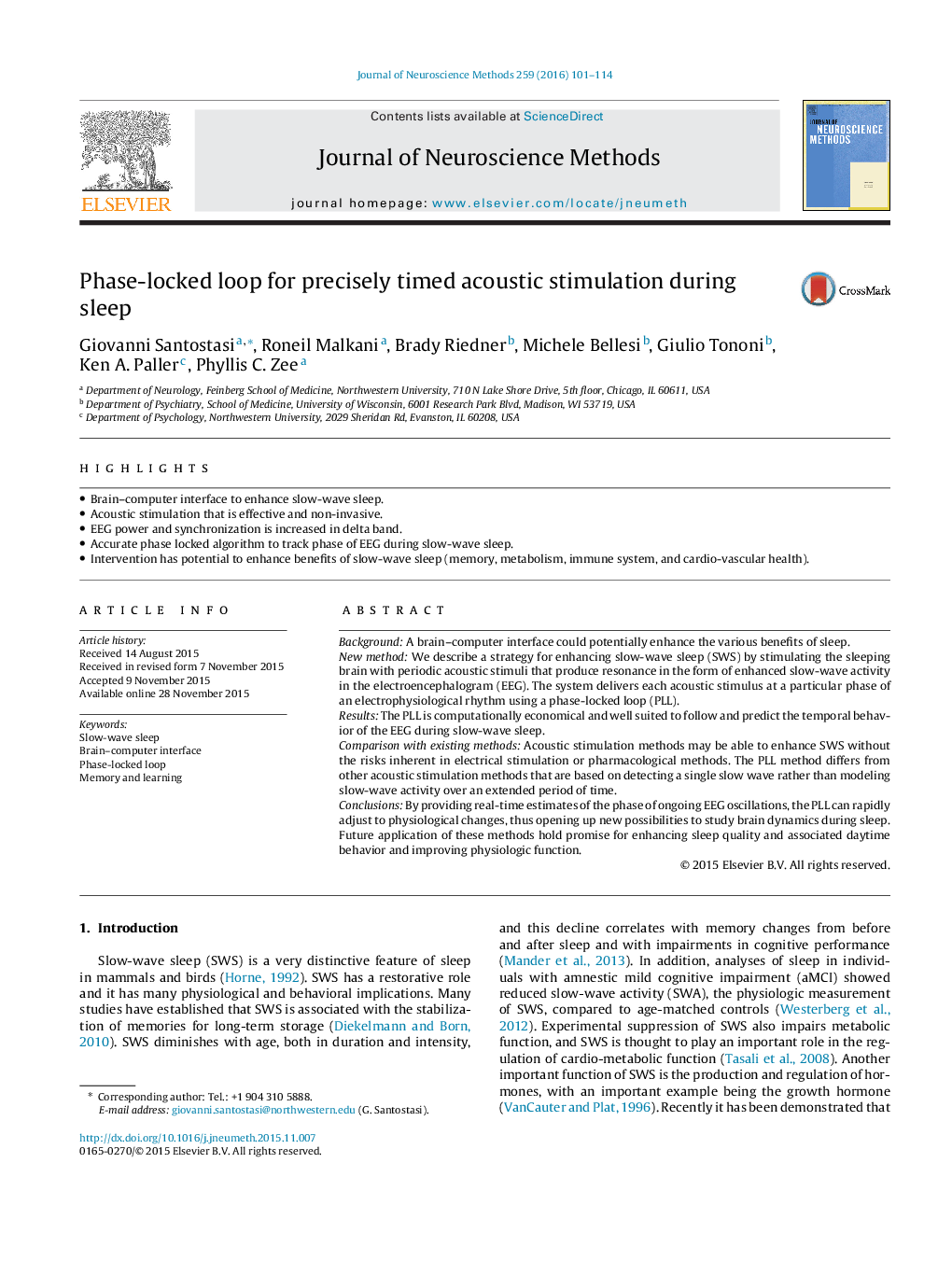| Article ID | Journal | Published Year | Pages | File Type |
|---|---|---|---|---|
| 6268006 | Journal of Neuroscience Methods | 2016 | 14 Pages |
â¢Brain-computer interface to enhance slow-wave sleep.â¢Acoustic stimulation that is effective and non-invasive.â¢EEG power and synchronization is increased in delta band.â¢Accurate phase locked algorithm to track phase of EEG during slow-wave sleep.â¢Intervention has potential to enhance benefits of slow-wave sleep (memory, metabolism, immune system, and cardio-vascular health).
BackgroundA brain-computer interface could potentially enhance the various benefits of sleep.New methodWe describe a strategy for enhancing slow-wave sleep (SWS) by stimulating the sleeping brain with periodic acoustic stimuli that produce resonance in the form of enhanced slow-wave activity in the electroencephalogram (EEG). The system delivers each acoustic stimulus at a particular phase of an electrophysiological rhythm using a phase-locked loop (PLL).ResultsThe PLL is computationally economical and well suited to follow and predict the temporal behavior of the EEG during slow-wave sleep.Comparison with existing methodsAcoustic stimulation methods may be able to enhance SWS without the risks inherent in electrical stimulation or pharmacological methods. The PLL method differs from other acoustic stimulation methods that are based on detecting a single slow wave rather than modeling slow-wave activity over an extended period of time.ConclusionsBy providing real-time estimates of the phase of ongoing EEG oscillations, the PLL can rapidly adjust to physiological changes, thus opening up new possibilities to study brain dynamics during sleep. Future application of these methods hold promise for enhancing sleep quality and associated daytime behavior and improving physiologic function.
